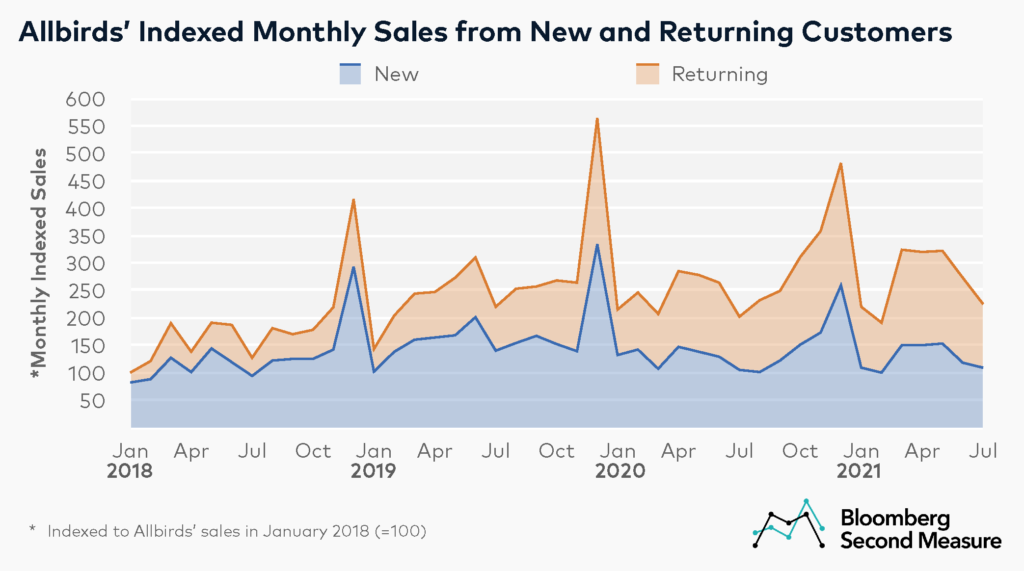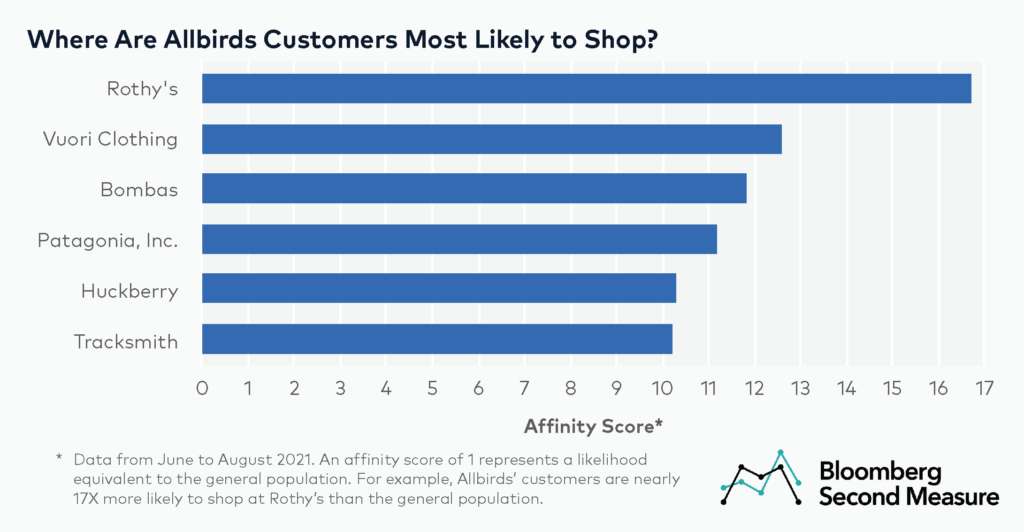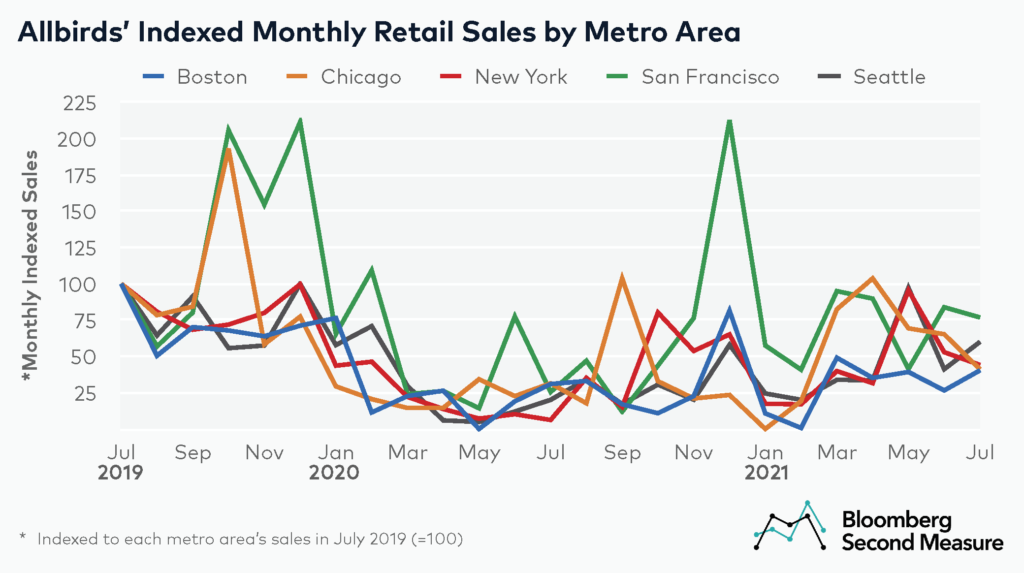NOTE: Bloomberg Second Measure launched a new and exclusive transaction dataset in July 2022. Our data continues to be broadly representative of U.S. consumers. As a result of this panel change, however, we recommend using only the latest posts in assessing metrics, and do not support referring to historical blog posts to infer period-over-period comparisons.
Allbirds, the San Francisco-based startup known for its sustainable footwear collections, recently filed for an IPO. Initially launched as a DTC sneaker company, Allbirds has been growing its retail footprint over the last few years while also expanding into apparel categories. As Allbirds prepares for its public debut, consumer spending data reveals how returning customers and holiday sales have contributed to sales growth, as well as how the company’s retail locations in select metro areas have fared during the pandemic.
Allbirds’ sales have been boosted by holiday spending and returning customers
Allbirds sales have generally been trending upward over the past few years, with particularly strong growth in 2021. In fact, Allbirds sales from January through July of 2021 were 11 percent higher than the same period last year and 14 percent higher than the same period in 2019.

A closer look at annual sales patterns since January 2018 reveals that Allbirds is subject to holiday seasonality, with significant sales spikes occurring in December of each year. However, Allbirds appears to be less dependent on holiday sales as year-round demand has increased. In 2020, only 14 percent of annual sales were in December, compared to 17 percent in 2019 and 19 percent in 2018.
Another likely factor in Allbirds’ growth over the past few years is the growing percentage of sales from returning customers. In 2018, a monthly average of 29 percent of sales came from returning customers. The average monthly share of sales from returning customers increased over the next two years to 37 percent in 2019 and 49 percent in 2020. Year-to-date as of July 2021, a monthly average of 52 percent of sales came from returning customers.
Allbirds customers tend to shop at activewear brands and other sustainable retailers
Customer affinity data shows where else customers of a given company are most likely to spend. The data reveals that Allbirds’ shoppers have positive customer affinity toward other sustainable brands, as well as brands that sell activewear. More specifically, Allbirds customers are roughly 17 times more likely than the general population to shop at Rothy’s (another DTC sustainable footwear competitor), and nearly 12 times more likely to shop at Bombas (an apparel brand that donates one clothing item for every purchase).

Similarly, Allbirds customers are at least 10 times more likely than the average consumer to shop at activewear brands Vuori Clothing, Patagonia, Huckberry, and Tracksmith. This is notable since Allbirds launched its own activewear line shortly before filing for an IPO. Allbirds’ activewear is reportedly the first performance apparel line that includes a label outlining each item’s carbon footprint. Activewear is also a differentiator from Allbirds’ main competitor Rothy’s, which currently does not sell apparel.
Allbirds retail sales in San Francisco are recovering faster than other metros
Allbirds has grown its retail presence, opening stores in major metro areas such as San Francisco and New York. Among the metro areas where Allbirds had an established retail presence two years ago, retail sales have not fully reached pre-pandemic levels.

In July 2021, Allbirds’ retail sales in San Francisco were 23 percent lower than they were the same month in 2019. However, this recovery rate is still higher than in other major metro areas where Allbirds had a retail location before the pandemic, including New York, Seattle, Chicago, and Boston. The New York metro area’s retail sales were 56 percent lower in July 2021 than they were in July 2019. For the Chicago and Boston metro areas, sales were roughly 60 percent lower while for Seattle, they were 40 percent lower.
Interestingly, the San Francisco metro area’s retail sales in December 2020 experienced a similar spike as in December 2019, corresponding with the seasonal sales pattern observed at the national level. Retail sales in Boston were also 14 percent higher in December 2020 than in December 2019.
Allbirds is among a group of sustainability-focused companies—including Sweetgreen and Warby Parker—to file for an IPO in 2021. Following its IPO, Allbirds will list shares on the NASDAQ under the ticker symbol BIRD.
*Note: Bloomberg Second Measure regularly refreshes its panel and methods in order to provide the highest quality data that is broadly representative of U.S. consumers. As a result, we may restate historical data, including our blog content.
